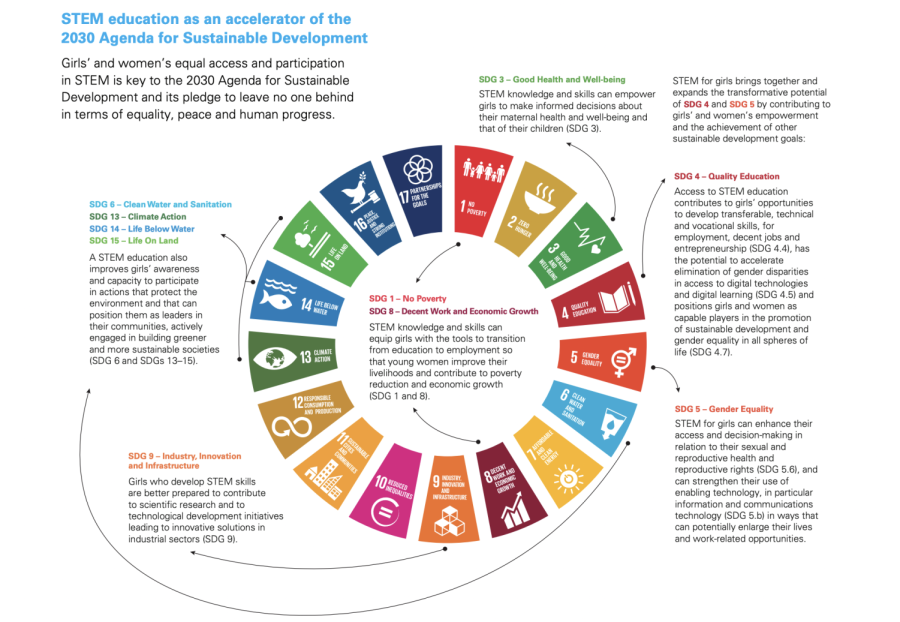STEM education fosters student and societal growth
December 23, 2022
Courtesy of the United Nations
“STEM education [is] an accelerator of the 2030 Agenda for Sustainable Development Girls’ and women’s equal access and participation in STEM is key to the 2030 Agenda for Sustainable Development and its pledge to leave no one behind in terms of equality, peace and human progress,” read a statement released from the United Nation report; “Reimagining Girl’s Education through STEM”
The study of STEM (science, technology, engineering, and math) has been the driving force behind much of the world’s discoveries and advancements throughout history. These disciplines have allowed doctors to develop cures for diseases, put astronauts on the moon, reveal the inner workings of the human body, and connect the world via the Internet. Without a doubt, teaching students STEM plays a crucial role in nurturing a new generation of innovators, inventors, and problem solvers.
Today, the demand for jobs in STEM fields is rapidly increasing: according to the Pew Research Center, STEM employment in the U.S. has risen from 9.7 million to 17.3 million since 1990 — expanding by a whopping 79% and outpacing overall employment growth. In fact, employment in the computer science sector has more than quadrupled since the 90s (a 338% increase) and that of the healthcare industry has nearly doubled (a 92% increase).
However, the supply of ready workers to fill such positions lags behind. For example, a 2018 White House report titled “Charting a Course for Success: America’s Strategy for STEM Education” found that only 20% of college-bound high schoolers were ready for courses typically required for a STEM major. Simply put, the growth of the STEM workforce is surpassing the output of the education system that sustains it.
Bridging the gap between the supply and demand for STEM workers can start with K-12 education, especially at the high school level, since a student’s access to an advanced STEM curriculum plays a direct role in their decision to pursue STEM or a STEM-related discipline in higher education. For example, a 2013 study published in American Educational Research Journal found that minority students heavily consider success in advanced math classes as a factor when deciding whether to study STEM in the future.
Furthermore, STEM education not only equips students with crucial skills to support today’s ever-growing STEM workforce, but also prepares them with interdisciplinary skills such as problem solving, creative thinking, and communication.
Former First Lady Eleanor Roosevelt once said, “I think, at a child’s birth, if a mother could ask a fairy godmother to endow it with the most useful gift, that gift should be curiosity.” Our world may not have fairy godmothers to do such a job, but we do, however, have schools. By developing an effective STEM education system, schools can instill qualities such as curiosity and inquisitiveness within the world’s youth — qualities that will help them go far in life, in STEM and beyond.
